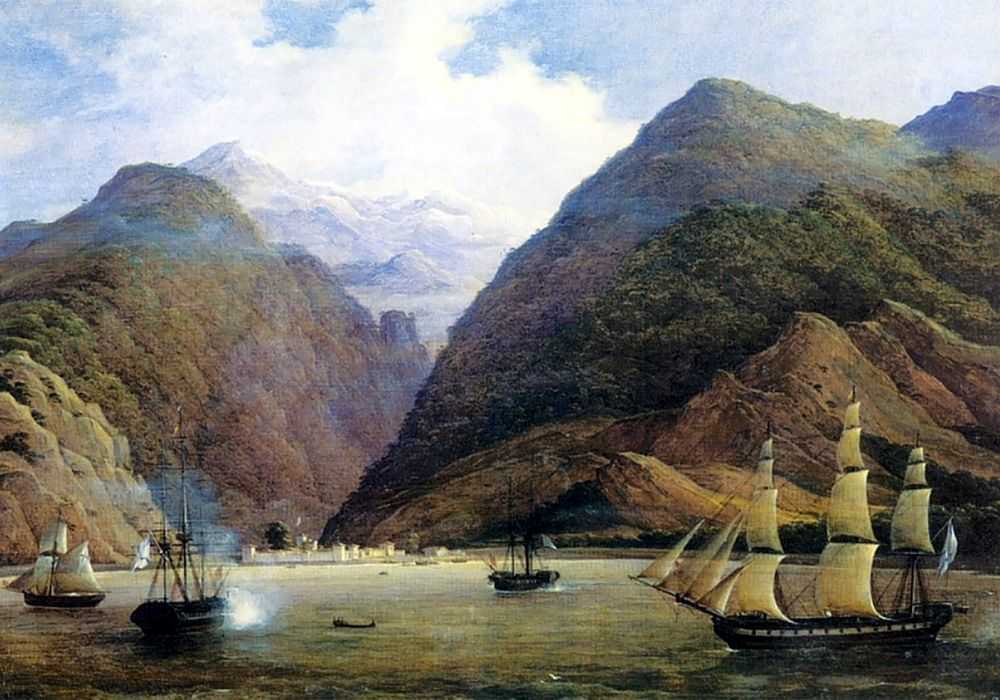Arabica Massif on:
[Wikipedia]
[Google]
[Amazon]

 Arabika Massif (Arabika) is a glacially eroded
Arabika Massif (Arabika) is a glacially eroded

 Arabika Massif (Arabika) is a glacially eroded
Arabika Massif (Arabika) is a glacially eroded karst
Karst is a topography formed from the dissolution of soluble rocks such as limestone, dolomite, and gypsum. It is characterized by underground drainage systems with sinkholes and caves. It has also been documented for more weathering-resistant ro ...
outcropping
An outcrop or rocky outcrop is a visible exposure of bedrock or ancient superficial deposits on the surface of the Earth.
Features
Outcrops do not cover the majority of the Earth's land surface because in most places the bedrock or superficial ...
of the Gagra Range
Gagra Range (; ka, გაგრის ქედი, tr; russian: Гагрский хребет, Gagrskij hrebet) is a mountain range of the Greater Caucasus in Abkhazia, Georgia.The range runs between the valleys of the Bzyb and Psou rivers t ...
, Abkhazia
Abkhazia, ka, აფხაზეთი, tr, , xmf, აბჟუა, abzhua, or ( or ), officially the Republic of Abkhazia, is a partially recognised state in the South Caucasus, recognised by most countries as part of Georgia, which vi ...
in the West Caucasus
The Western Caucasus is a western region of the Caucasus in Southern Russia, extending from the Black Sea to Mount Elbrus.
World Heritage Site
The Western Caucasus includes a natural UNESCO World Heritage Site comprising the extreme western ...
, by the city of Gagra
Gagra ( ka, გაგრა; Abkhaz and Russian: Гагра) is a town in Abkhazia/Georgia, sprawling for 5 km on the northeast coast of the Black Sea, at the foot of the Caucasus Mountains. Its subtropical climate made Gagra a popular hea ...
. The highest elevation - mountain Arabika is .Mta ArabikaGeoNames
GeoNames (or GeoNames.org) is a user editable geographical database available and accessible through various web services, under a Creative Commons attribution license. The project was founded in late 2005.
The GeoNames dataset differs from ...
Geology
The 13-km-long massif is composed ofLower Cretaceous
Lower may refer to:
*Lower (surname)
*Lower Township, New Jersey
*Lower Receiver (firearms)
*Lower Wick
Lower Wick is a small hamlet located in the county of Gloucestershire, England. It is situated about five miles south west of Dursley, eight ...
and Upper Jurassic
The Late Jurassic is the third epoch of the Jurassic Period, and it spans the geologic time from 163.5 ± 1.0 to 145.0 ± 0.8 million years ago (Ma), which is preserved in Upper Jurassic strata.Owen 1987.
In European lithostratigraphy, the name ...
limestone
Limestone ( calcium carbonate ) is a type of carbonate sedimentary rock which is the main source of the material lime. It is composed mostly of the minerals calcite and aragonite, which are different crystal forms of . Limestone forms whe ...
s that dip continuously southwest to the Black Sea
The Black Sea is a marginal mediterranean sea of the Atlantic Ocean lying between Europe and Asia, east of the Balkans, south of the East European Plain, west of the Caucasus, and north of Anatolia. It is bounded by Bulgaria, Georgia, Roma ...
and plunge below the modern sea level. The area is densely wooded, with large areas of both coniferous forest and mixed woodland.
The Arabika contains a number of remarkable caves, gorges, wells, and precipices, including the Veryovkina Cave
Veryovkina Cave (also spelled Verëvkina Cave, , ) is a cave in Abkhazia, a breakaway region of Georgia. At 2,212 meters (7,257 ft) deep, it is the deepest-known cave on Earth. Its entrance is 2,285 metres (7,497 ft) above sea level. The entrance ...
and Voronya Cave
Krubera Cave ( ab, Ӡоу Аҳаҧы, ka, კრუბერის გამოქვაბული or კრუბერის ღრმული, tr; also known as Voronya Cave, sometimes spelled Voronja Cave) is the second-deepest-known c ...
, the world's deepest caves. Alexander Kruber
Alexander Alexandrovich Kruber (russian: Александр Александрович Крубер; – December 15, 1941) was a Soviet geographer, professor, the founder of the Russian and Soviet karstology.
Alexander Kruber was born in Istr ...
was the first to explore some of these features in 1909.
According to Rebecca Felix, the Arabica's "towering heights of limestone suggest the possibility of amazingly deep caves, boring the length of the massif and into the earth below its base".
Notes
References
Mountain ranges of the Caucasus Mountain ranges of Abkhazia {{Georgia-geo-stub